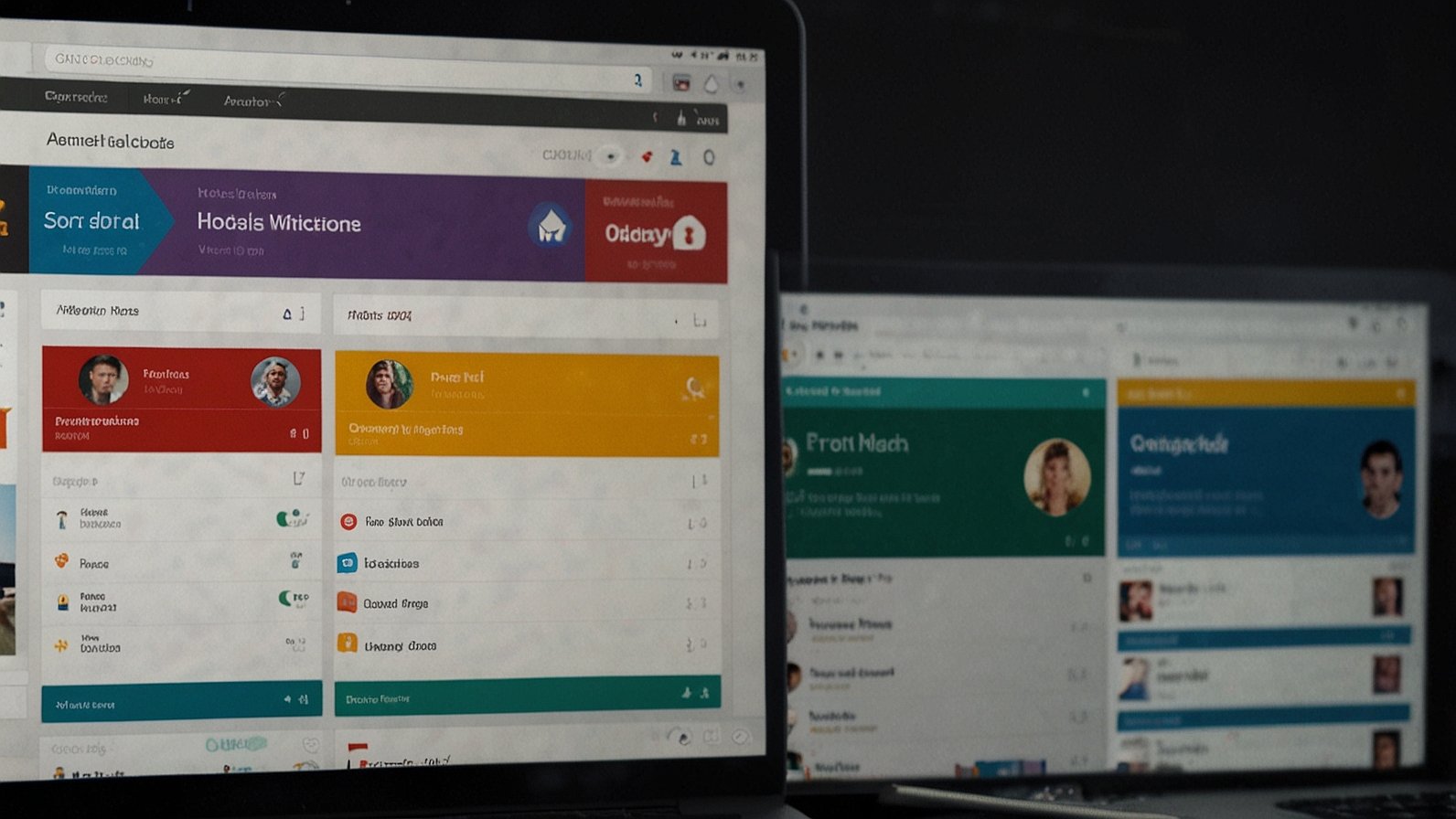Ever feel like you’re running in circles with your business or creative project? You’re putting in the hours, but the needle just isn’t moving. You see others scaling seemingly overnight and wonder, “What’s the actual secret sauce?”
Well, imagine if that secret sauce came with a clear, step-by-step recipe. That’s essentially what the success100x.com factors offer—a practical, no-fluff playbook for entrepreneurs and creators who are done with guesswork. It’s not about a magic pill; it’s about a consistent system. Let’s break down this powerful framework so you can start applying it today.
Getting Started: What Are These “Success Factors” Anyway?
At its core, the success100x.com factors framework is a checklist of non-negotiable elements for growth. Think of it as the foundation for building a house. You wouldn’t skip laying the concrete, right? Similarly, this framework insists you get these foundational elements rock-solid. Multiple guides and summaries consistently point to the same key areas, which we’ll explore one by one.
The beauty of this system is its action-oriented nature. It’s not theoretical; it’s a tactical how-to guide designed to produce measurable results.
The Core success100x.com Factors for Explosive Growth
Here are the essential building blocks you need to master. Forget just reading about them—the real power comes from honestly assessing which ones you’ve already mastered and which need your immediate attention.
1. Crystal Clear Vision and Goals
You can’t hit a target you can’t see. A vague idea like “I want to be successful” won’t cut it. This factor is about defining what success actually looks like for you.
- Get Specific: Instead of “get more clients,” aim for “acquire five new high-ticket clients within Q3.”
- Write It Down: A vision that isn’t documented is just a daydream. Keep your goals where you can see them every single day.
- Break It Down: A big, audacious goal can be overwhelming. Break it into quarterly, monthly, and weekly targets. This makes the journey feel manageable.
2. Daily Habits and a Champion’s Mindset
Your business is a reflection of your inner world. If you’re inconsistent, your business will be, too. This is all about the micro-actions and mental shifts that compound over time.
- Build Routines: What are the five non-negotiable tasks you do each day to move the needle? It could be outreach, content creation, or skill-building.
- Embrace the Grind: Understand that some days will be boring. Success is often found in showing up on those boring days.
- Reframe Failure: See setbacks as data, not drama. What did it teach you? Now, adjust and move forward.
3. Data-Driven Decision Making
Running a business on a “gut feeling” is like driving with a blindfold on. This factor forces you to remove emotion and let the numbers guide you.
- Track Key Metrics: Identify your North Star Metric—the one number that best represents the value you deliver. For a SaaS, it might be Monthly Recurring Revenue (MRR). For a creator, it could be audience engagement rate.
- Analyze and Act: Don’t just collect data. Use it. If a blog post is getting huge traffic, can you turn it into a lead magnet or a product? If an ad isn’t converting, kill it and try something new.
4. Marketing and Visibility
It doesn’t matter how amazing your product or service is if no one knows about it. This is about strategically putting yourself in front of your ideal audience.
- Find Your Channel: You don’t need to be everywhere. Are your customers on LinkedIn, TikTok, or in specific Facebook groups? Double down there.
- Provide Value First: Marketing isn’t just shouting “Buy my stuff!” It’s about teaching, entertaining, or solving a problem for free. This builds trust and authority. Think of how HubSpot provides massive free resources, which in turn markets their premium software.
5. Systems That Scale
If every task relies solely on you, you don’t own a business—you own a job. This factor is about building a machine that can run without you micromanaging every cog.
- Document Everything: Create Standard Operating Procedures (SOPs) for repetitive tasks. How do you onboard a client? How do you publish a blog post?
- Automate: Use tools to handle social media scheduling, email marketing, and customer support.
- Delegate or Outsource: Once a system is documented, you can hand it off. Hire a virtual assistant for admin work or a freelancer for design. This frees you up to focus on high-impact strategy.
6. Relentless Adaptability
The market, algorithms, and customer preferences are always changing. A rigid business is a fragile one. This is about being agile and responsive.
- Listen to Feedback: Actively seek out what your customers are saying. Their complaints are your innovation roadmap.
- Stay Curious: Continuously learn about new trends and technologies in your industry. Netflix’s pivot from mailing DVDs to dominating streaming is a masterclass in adaptability.
Before vs. After Implementing the Framework
Let’s make this concrete. Here’s what a typical journey looks like.
| The “Before” Struggle | The “After” Transformation |
|---|---|
| Working reactively, putting out fires all day. | Working proactively from a clear, strategic plan. |
| Guessing what content or product to create next. | Using data to validate ideas before investing time. |
| Feeling overwhelmed and wearing all the hats. | Having systems and (maybe) a team to handle operations. |
| Growth is sporadic and unpredictable. | Growth is consistent, predictable, and measurable. |
Your 5-Step Action Plan to Start Today
This might feel like a lot, but you don’t have to do it all at once. Start here.
- Clarity Hour: Block one hour this week with no distractions. Write down your one-year vision and three primary goals. Get brutally specific.
- Audit Your Data: Look at your analytics. What are your top three traffic sources? What’s your best-converting product? Write them down.
- Systematize One Thing: Pick one repetitive task you hate (e.g., invoicing, social media graphics) and document the steps or find a tool to automate it.
- Plan One Week of Content: Based on your goals and audience, plan and create five pieces of content for your chosen platform.
- Review and Adapt: At the end of the week, spend 30 minutes reviewing what worked and what didn’t. Adjust your plan for next week.
Wrapping It Up: Your Path to 100X
Ultimately, the success100x.com factors aren’t a secret society handshake. They are a disciplined, repeatable system for building something that lasts. It’s the difference between being a passionate hobbyist and a professional creator or entrepreneur. The framework empowers you to replace chaos with control and hope with a proven strategy.
So, what’s the one factor from this list that, if you improved it, would make the biggest difference in your business? Start there.
You May Also Like: Pasonet: The Peso-Powered Internet Revolution
FAQs
What is the main purpose of the success100x.com factors?
The main purpose is to provide a clear, actionable checklist for entrepreneurs and creators to systematically scale their ventures. It replaces guesswork with a structured framework focusing on vision, habits, data, marketing, systems, and adaptability.
Do I need a lot of money to implement these factors?
Not at all. While some tools and outsourcing cost money, the core principles—gaining clarity, building the right habits, making data-informed decisions, and creating systems—require mostly time and discipline, not a big budget.
How is this different from other business advice?
This framework stands out because it’s packaged as an integrated system. Many experts talk about one piece (like marketing or mindset), but the success100x.com factors present them as interconnected parts that all need to work together for maximum impact.
Which factor is the most important?
While all are crucial, most experts would point to Clarity of Vision and Goals as the non-negotiable starting point. Without a clear destination, the other factors lack direction and purpose. Everything else flows from knowing where you want to go.
How long does it take to see results?
This isn’t a “30 days to millions” scheme. You might see small wins—like better productivity or more web traffic—within a few weeks. However, significant, scalable growth typically comes from consistent application over several months.
Can a solo creator or freelancer use this?
Absolutely. In fact, they might benefit the most. Implementing these factors early helps solopreneurs avoid burnout and build a business that can grow beyond their own personal time and effort.
What if I’m strong in some areas but weak in others?
That’s completely normal and expected! The framework acts as a diagnostic tool. Identify your weakest link—perhaps it’s “Systems That Scale” or “Data-Driven Decisions”—and focus your energy there first.










